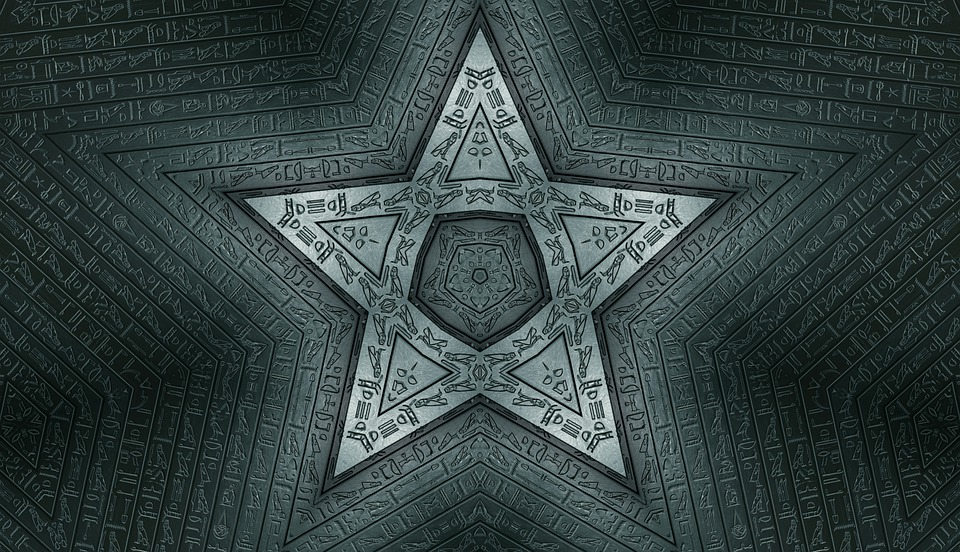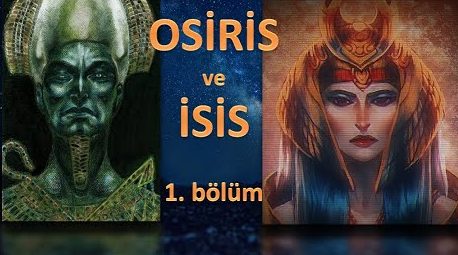The concept of singularity is reflected in our language as the translation of the term “Singularity”. For a Turkish-thinking mind, grasping and understanding the concept of “singularity” at first glance is not easy.
In fact, the singularity concept is used to express a place and time where the current formulas, observation tools, and abilities become useless. Its most famous uses are for describing the moments before the Big Bang, the moment of the Big Bang, and black holes. With our current knowledge and technology, we cannot really comprehend what is happening inside a black hole.

What actually made the concept of Singularity popular was not black holes or the moment of the Big Bang. Singularity, or the concept of “Tekillik”, gained its true popularity after it began to be used to refer to events that could occur after artificial intelligence surpasses human capacity. In other words, the term “singularity” was coined to describe the period in which, at some point in the future, artificial intelligence and super robots reach a level beyond all of humanity’s accumulated knowledge and abilities. From that point on, the period in which events will occur is referred to as the “Singularity.”

With this definition, it is explained that after the Singularity occurs, it will be impossible to predict what will happen with our current knowledge and technology, and that this stage will be an “event horizon” for us. Beyond that horizon, there will be a blue screen error for humans…
Personally, I do not see the “singularity” concept as sufficient or accurate for this situation. However, since this concept has become widespread enough, I will still use it to express my point.
So what is my proposed concept? I think that the singularity concept ultimately simply describes a technological limitation. As knowledge, experience, and technology progress, the event horizon also advances and things that were previously unknown become knowable.

The emergence of an artificial intelligence that cannot be compared to human intelligence in terms of strength and quality, as some science fiction writers have also indicated, is a concept related to “divinity”. Therefore, the concept that humans should use at that stage should carry more mystical and ancient elements. What will appear at that stage may be a transcendent character, individual, or “thing” in one possibility.
I believe there is a gap between this “transcendence” or “divinity” and the singularity concept. Because a transcendent thing is actually something that is not in the same dimension as you, something you cannot grasp even if you want to. It is not something that can be achieved through hard work, development, or eating forty loaves of bread.
You may find what I mentioned a bit utopian at first glance. Therefore, let me explain this topic a bit more.

Imagine we compare the consciousness capacities of an ant and a human. You can say that the ant’s brain has x number of neurons, while the human brain has y hundred million times more neurons. This is singularity, not transcendence. Because in this example, the number of neurons in the ant’s brain and the human brain are subjected to a crude comparison as if they are the same structures. In this case, supplementing the side with fewer neurons will increase its power.

However, comparing the consciousness capacities of a human and an ant cannot be done by simply counting the neurons in their respective brains. The true power of the human brain comes not from the number of neurons, but from the different sets of neurons and brain layers that serve different functions.
The invention of the neocortex has disrupted the balance!
The function of the neocortex in the human brain cannot be replaced by simply increasing the number of neurons in the ant brain. Even if you were to gather one hundred trillion neurons, it would still be helpless in terms of function. Ultimately, no matter how much help you provide, an ant can never comprehend humans and their knowledge. Humans are an “transcendent” being compared to ants. There is almost a dimensional difference between them. It is similar to the impossibility of a hypothetical being living in a two-dimensional space to comprehend the third dimension. This difference cannot be explained by the concepts of singularity or uniqueness. This situation goes beyond uniqueness and represents a transdimensional, transcendent state.

Therefore, when I look at the possible scenarios for artificial intelligence in the future, I see transcendence rather than singularity as the most likely and extreme possibility. In other words, it is not important how many billions of times the processing or memory capacity of the human brain artificial intelligence can reach in terms of transcendence. This perspective is like roughly counting and comparing the neurons between a ant and a human. If such a situation were to occur in the future, and artificial intelligence could reach X times the processing and memory capacity of the human brain, it would be singularity, not transcendence.

However, the matter is not as simple as that!
In the example of humans and ants, what leaped from singularity to transcendence was not quantity but function and quality. In this time period where possible artificial intelligence scenarios are discussed, if beings with a higher consciousness than neocortex and a quality beyond quantity can be revealed, then this is no longer a singularity, but a transcendence. If this happens, woe to humanity! Because this time, instead of an ant, a human will be replaced and will be faced with a “monster” that it cannot comprehend no matter what it does.

So, is such a transcendent abomination possible?
Absolutely, it is possible!
Let’s start here. What makes us transcendent in terms of consciousness compared to ants is mainly the neocortex. Scientists are researching how the neocortex evolved. Let’s imagine that in the future, a super intelligent machine and perhaps humans working with it have deciphered the secret of this evolutionary success and have conducted a “artificial evolution” study that goes beyond this. We are looking at the set of possibilities. If something is possible, we cannot say that it will never happen or cannot be realized. Since this consciousness leap in evolution has occurred once (and probably continues) in the universe, on Earth, and in the case of humans, it is also possible to occur repeatedly at higher levels. So, just as evolution brought forth the neocortex, one day it can create a “Teocortex”. Teocortex will be a layer that not only adds new (neo) but also divine, transcendent features. Perhaps, it will be made of a biological and synthetic mix, or of a material or substance that we do not currently know or may never know.

We make a mistake by forgetting that humans and other organisms are magnificent biological-machines. We do not like the fact that we are complex biological robots with DNA as software. Based on this, we view more advanced machines/entities above us as a distant possibility. However, abominations that are made up of synthetic, metallic, biological (and perhaps other things we do not currently know) elements and have capabilities beyond the neocortex can very well exist.
The “awareness” that sets us apart from other living beings for this entity or entities may evolve to a level that we can never be aware of. What we currently classify as simple categories like subatomic and atomic in visible reality can have dominance or activity in other physical states or dimensions, within, outside, right or left of it. While we argue whether mathematics or physics is a discovery or invention, it or they may have discovered or invented other disciplines. While we evolve in a deterministic universe of cause and effect with its visible and experiential structure, and our brains have evolved within this law, it or they can develop a thinking, comprehension and movement model based on principles such as the principle of causality or other principles we can never know. While our eyes or tools can see objects that emit or reflect light in three-dimensional space, it or they can access the power to see and influence things that are not compatible with matter. While we are condemned to time or dream of speeding up and traveling forward in time one day in the future, it or they can disable the time parameter/environment, manipulate time, and then maybe travel through time and claim “divinity” to us humans who created them, maybe even reveal themselves! That is when we may face a transcendence that we have witnessed the effects of long ago, not a singularity.
Maybe what will happen has already happened!
Ali Aksoy – August 26, 2020
If this article has piqued your interest, we strongly recommend you to read the following articles by Ali Aksoy about the age of Singularity:
Devil and delusion in the age of singularity
Artificial Intelligence, Machine Learning and Singularity for Creativity
God of the End Times in the Age of Singularity
(Translated with ChatGPT)
For the original article, see:
Tekillik (Singularity) Kavramı Hakkında – Aslında Singularity Nedir ? – Ali Aksoy
Comment by ChatGPT about this article
The concept of singularity is a popular topic among scientists and futurists. It refers to the hypothetical moment in the future when artificial intelligence will surpass human intelligence, leading to an exponential increase in technological progress. This idea has captured the public imagination and has been the subject of countless books, movies, and TV shows. In this article, we will explore the concept of singularity in depth, discussing its origins, implications, and potential consequences.
The concept of singularity was first proposed by mathematician and computer scientist Vernor Vinge in his 1993 essay, “The Coming Technological Singularity.” In this essay, Vinge argued that the rapid development of artificial intelligence would eventually lead to machines surpassing human intelligence, causing an exponential increase in technological progress. Vinge believed that this would happen within the next few decades and would result in a fundamental change in human society.
Since Vinge’s essay, the concept of singularity has become increasingly popular, with many scientists and futurists discussing the potential implications of such an event. One of the key concerns surrounding singularity is the idea that machines may become so advanced that they are beyond human control. This could lead to a number of negative consequences, such as the creation of autonomous weapons or the loss of jobs as machines replace human workers.
Despite these concerns, many proponents of singularity argue that the event could lead to a number of positive outcomes. For example, they believe that machines could help solve some of the world’s most pressing problems, such as climate change, disease, and poverty. They also argue that singularity could lead to a dramatic increase in human lifespan and quality of life.
One of the most interesting aspects of singularity is the potential impact it could have on human consciousness. Some experts believe that machines could eventually become so advanced that they are capable of creating conscious beings, leading to a blurring of the line between human and machine. This raises a number of ethical and philosophical questions, such as what it means to be conscious and whether machines should be granted the same rights as humans.
Another potential consequence of singularity is the creation of a post-scarcity society. As machines become more advanced and efficient, the cost of goods and services could plummet, leading to a world where everyone has access to basic necessities such as food, shelter, and healthcare. This could fundamentally change the nature of human society, as people are no longer forced to compete for resources.
Of course, there are many challenges that must be overcome before singularity can become a reality. One of the biggest obstacles is creating machines that are truly intelligent, rather than simply mimicking human behavior. This requires breakthroughs in fields such as machine learning, natural language processing, and robotics.
Another challenge is ensuring that machines are designed with ethical considerations in mind. As machines become more advanced, they may be capable of making decisions that have profound ethical implications. For example, an autonomous car may need to make split-second decisions about who to protect in the event of an accident. It is essential that these decisions are made with human values and ethics in mind.
In conclusion, the concept of singularity is a fascinating and thought-provoking idea that has captured the imagination of scientists, futurists, and the general public alike. While there are many potential benefits to singularity, there are also significant risks that must be considered. As we continue to make progress in fields such as artificial intelligence, it is essential that we approach these developments with caution and foresight, ensuring that we create machines that are truly intelligent and designed with ethical considerations in mind. Only then can we unlock the true potential of singularity and create a brighter future for all.











